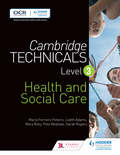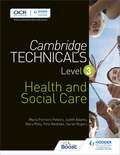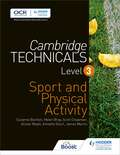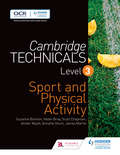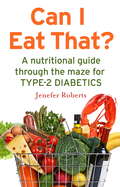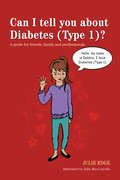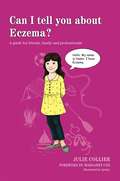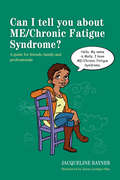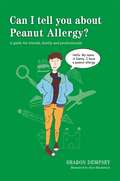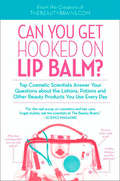- Table View
- List View
Cambridge Technicals Level 3 Health and Social Care
by Maria Ferreiro Peteiro Judith Adams Mary Riley Sarah Rogers Pete WedlakeSupport your teaching of the new Cambridge Technicals 2016 suite with Cambridge Technical Level 3 Health & Social Care, developed in partnership between OCR and Hodder Education; this textbook covers each specialist pathway and ensures your ability to deliver a flexible course that is both vocationally focused and academically thorough.Cambridge Technical Level 3 Health & Social Care is matched exactly to the new specification and follows specialist pathways in health science, social care and support, and working with children and young people.- Ensures effective teaching of each specialist pathway offered within the qualification.- Focuses learning on the skills, knowledge and understanding demanded from employers and universities.- Provides ideas and exercises for the application of practical skills and knowledge.- Developed in partnership between Hodder Education and OCR, guaranteeing quality resources which match the specification perfectly
Cambridge Technicals Level 3 Health and Social Care
by Maria Ferreiro Peteiro Mary Riley Judith Adams Sarah Rogers Pete WedlakeExam Board: CambridgeLevel: KS4Subject: Health & Social CareFirst Teaching: September 2016First Exam: June 2017Support your teaching of the new Cambridge Technicals 2016 suite with Cambridge Technical Level 3 Health & Social Care, developed in partnership between OCR and Hodder Education; this textbook covers each specialist pathway and ensures your ability to deliver a flexible course that is both vocationally focused and academically thorough.Cambridge Technical Level 3 Health & Social Care is matched exactly to the new specification and follows specialist pathways in health science, social care and support, and working with children and young people.- Ensures effective teaching of each specialist pathway offered within the qualification.- Focuses learning on the skills, knowledge and understanding demanded from employers and universities.- Provides ideas and exercises for the application of practical skills and knowledge.- Developed in partnership between Hodder Education and OCR, guaranteeing quality resources which match the specification perfectly
Cambridge Technicals Level 3 Sport and Physical Activity
by James Martin Scott Chapman Alister Myatt Helen Bray Annette Short Suzanne BointonExam Board: CambridgeLevel: KS4Subject: SportFirst Teaching: September 2016First Exam: June 2017Support your teaching of the new Cambridge Technicals 2016 suite with Cambridge Technical Level 3 Sport, developed in partnership between OCR and Hodder Education; this textbook covers each specialist pathway and ensures your ability to deliver a flexible course that is both vocationally focused and academically thorough.Cambridge Technical Level 3 Sport is matched exactly to the new specification and follows specialist pathways in n coaching, leadership and physical education, fitness instructing, personal training, and sports management, development and leisure.- Ensures effective teaching of each specialist pathway offered within the qualification.- Focuses learning on the skills, knowledge and understanding demanded from employers and universities.- Provides ideas and exercises for the application of practical skills and knowledge.- Developed in partnership between Hodder Education and OCR, guaranteeing quality resources which match the specification perfectly
Cambridge Technicals Level 3 Sport and Physical Activity (PDF)
by Helen Bray Scott Chapman Alister Myatt Annette Short Suzanne Bointon James MartinSupport your teaching of the new Cambridge Technicals 2016 suite with Cambridge Technical Level 3 Sport, developed in partnership between OCR and Hodder Education; this textbook covers each specialist pathway and ensures your ability to deliver a flexible course that is both vocationally focused and academically thorough.Cambridge Technical Level 3 Sport is matched exactly to the new specification and follows specialist pathways in n coaching, leadership and physical education, fitness instructing, personal training, and sports management, development and leisure.- Ensures effective teaching of each specialist pathway offered within the qualification.- Focuses learning on the skills, knowledge and understanding demanded from employers and universities.- Provides ideas and exercises for the application of practical skills and knowledge.- Developed in partnership between Hodder Education and OCR, guaranteeing quality resources which match the specification perfectly
Camisole and Cardigan tops (large print)
by RnibThere are two images of women's clothing on this page: a camisole top on the left of the page and a cardigan on the right. They are seen from the front. The camisole's thin straps and the cardigan's neck opening are at the top of the images. The hems of the garments are at the bottom of the images. There is a locator dot shown, which will be at the top left of the page when the image is the correct way up. The camisole top is made from lightweight fabric and has thin shoulder straps. It does not have any sleeves, and is fitted over the bust and cut low at the back. The cardigan is a knitted garment that opens at the front and is fastened by six buttons. It has a small rounded neck with a ribbed edging and is ribbed at the cuffs of the long sleeves and at the bottom of the body.
Camisole and Cardigan tops (UEB contracted)
by RnibThere are two images of women's clothing on this page: a camisole top on the left of the page and a cardigan on the right. They are seen from the front. The camisole's thin straps and the cardigan's neck opening are at the top of the images. The hems of the garments are at the bottom of the images. There is a locator dot shown, which will be at the top left of the page when the image is the correct way up. The camisole top is made from lightweight fabric and has thin shoulder straps. It does not have any sleeves, and is fitted over the bust and cut low at the back. The cardigan is a knitted garment that opens at the front and is fastened by six buttons. It has a small rounded neck with a ribbed edging and is ribbed at the cuffs of the long sleeves and at the bottom of the body.
Camisole and Cardigan tops (UEB uncontracted)
by RnibThere are two images of women's clothing on this page: a camisole top on the left of the page and a cardigan on the right. They are seen from the front. The camisole's thin straps and the cardigan's neck opening are at the top of the images. The hems of the garments are at the bottom of the images. There is a locator dot shown, which will be at the top left of the page when the image is the correct way up. The camisole top is made from lightweight fabric and has thin shoulder straps. It does not have any sleeves, and is fitted over the bust and cut low at the back. The cardigan is a knitted garment that opens at the front and is fastened by six buttons. It has a small rounded neck with a ribbed edging and is ribbed at the cuffs of the long sleeves and at the bottom of the body.
Can Alzheimer's Disease be Prevented?
by National Institutes on HealthLearning about risk factors you can't control, prevention strategies, what else can you do about Alzheimer's disease?
Can I Eat That?: A nutritional guide through the dietary maze for type 2 diabetics
by Jenefer RobertsWritten in a chatty and non-medical style, Can I Eat That? guides people through the initial and sometimes frightening stages which follow diagnosis of Type 2 diabetes. It contains an explanation of the nutritional factors behind the disease, and the nutritional factors in foods that are tolerated; and brings these factors together in advice on the choice - and the cooking - of beneficial and tasty foods. The book also contains over 100 various recipes for healthy, nutritious and above all enjoyable meals suitable for people with Type 2 diabetes.
Can I Have Babies Too?: Sexuality and Relationships Education for Children from Infancy up to Age 11
by Clare Bennett Sanderijn van der Doef Arris LueksDrawing on extensive professional and personal experience, this book offers guidance and advice on how to better communicate with children about relationships and sexuality using everyday situations. An invaluable resource for teachers and parents, it provides you with the tools you need to feel confident and informed about how to talk about sexual education at all stages. The book explores the challenges in adult-child communication about sexuality and provides helpful advice on how to establish an open dialogue. The guidance provided is developmentally appropriate, with chapters moving through different ages and development stages. Throughout, the book emphasizes the importance of positive sexuality education, empowering children to enjoy their relationships and sexuality in a safe and healthy way.
Can I Tell You About Compassion?: A Helpful Introduction for Everyone (Can I tell you about...?)
by Sue WebbWhat's the difference between being kind and being compassionate? How can we become more compassionate? And why can being compassionate be so difficult? Join Sam as he learns answers to these, and many more, questions about this important character virtue.
Can I tell you about Dementia?: A guide for family, friends and carers
by Jane Telford Jude WeltonMeet Jack - an older man with dementia. Jack invites readers to learn about dementia from his perspective, helping them to understand the challenges faced by someone with dementia and the changes it causes to memory, communication and behaviour. He also gives advice on how to help someone with dementia stay as mentally and physically active as possible, keep safe and continue to feel cared for and valued. With illustrations throughout, this useful book will be an ideal introduction to dementia for anyone from child to adult. It will also guide family, friends and carers in understanding and explaining the condition and could serve as an excellent starting point for family discussions.
Can I tell you about Dementia?: A guide for family, friends and carers (PDF)
by Jane Telford Jude WeltonMeet Jack - an older man with dementia. Jack invites readers to learn about dementia from his perspective, helping them to understand the challenges faced by someone with dementia and the changes it causes to memory, communication and behaviour. He also gives advice on how to help someone with dementia stay as mentally and physically active as possible, keep safe and continue to feel cared for and valued. With illustrations throughout, this useful book will be an ideal introduction to dementia for anyone from child to adult. It will also guide family, friends and carers in understanding and explaining the condition and could serve as an excellent starting point for family discussions.
Can I tell you about Diabetes (Type 1)?: A guide for friends, family and professionals
by Julie Edge Julia MacconvilleMeet Debbie - a young girl with diabetes type 1. Debbie invites readers to learn about this type of diabetes from her perspective, describing how it feels to have high and low blood sugar levels. She explains how she can monitor her blood sugar and controls it with medication. Debbie also talks about the challenges of having diabetes and lets readers know how she can be helped and supported. This illustrated book is ideal for young people aged 7 upwards, as well as parents, friends, teachers and nurses. It is also an excellent starting point for family and classroom discussions.
Can I tell you about Diabetes (Type 1)?: A guide for friends, family and professionals (PDF)
by Julia Macconville Julie EdgeMeet Debbie - a young girl with diabetes type 1. Debbie invites readers to learn about this type of diabetes from her perspective, describing how it feels to have high and low blood sugar levels. She explains how she can monitor her blood sugar and controls it with medication. Debbie also talks about the challenges of having diabetes and lets readers know how she can be helped and supported. This illustrated book is ideal for young people aged 7 upwards, as well as parents, friends, teachers and nurses. It is also an excellent starting point for family and classroom discussions.
Can I tell you about Eczema?: A guide for friends, family and professionals (PDF)
by Apsley Julie Collier Margaret CoxMeet Helen - a girl with eczema. Helen invites readers to learn about this skin condition from her perspective, describing how it feels to have itchy and inflamed skin nearly all the time. She explains how different creams, ointments and other treatments can help her skin to feel better and lets readers know about other ways she can be helped and supported. This illustrated book is ideal for young people aged 7 upwards, as well as parents, friends, teachers and nurses. It is also an excellent starting point for family and classroom discussions.
Can I tell you about Eczema?: A guide for friends, family and professionals
by Julie Collier Apsley Margaret CoxMeet Helen - a girl with eczema. Helen invites readers to learn about this skin condition from her perspective, describing how it feels to have itchy and inflamed skin nearly all the time. She explains how different creams, ointments and other treatments can help her skin to feel better and lets readers know about other ways she can be helped and supported. This illustrated book is ideal for young people aged 7 upwards, as well as parents, friends, teachers and nurses. It is also an excellent starting point for family and classroom discussions.
Can I Tell You About Gratitude?: A Helpful Introduction For Everyone
by Liz Gulliford Rosy SalamanMeet Maya. Maya always tries to be polite, and to remember to say 'thank you' but she wants to learn what it means to be truly grateful. Should she be grateful to her teachers for their hard work, even though they're only doing their job? Does she need to say thank you for the gifts she doesn't really like - like the pink scarf Nani gave her last birthday? And when Laura gives her some earrings but later asks to copy her history project in return, should Maya be grateful and give her the thank you letter she has written? This illustrated book is an ideal conversation starter for children aged 7+, helping them to understand what gratitude means, recognise when it is appropriate, and develop their own ability to be genuinely grateful.
Can I tell you about ME/Chronic Fatigue Syndrome?: A guide for friends, family and professionals
by Jason Lythgoe-Hay Jacqueline RaynerMeet Mollie - a woman with an illness called ME (Myalgic Encephalomyelitis) or CFS (Chronic Fatigue Syndrome), and her family, Mike, Ellie and Eric. Mollie and her family help readers to understand what ME/CFS is, what it is like to have it and how it can affect their family life. Mollie can't always do things that other mums do because of her illness, which can sometimes be frustrating, but they share strategies that help them all to cope. The family also explain how ME/CFS can affect different people in different ways. This illustrated book is an ideal introduction to this often misunderstood condition. It shows family, friends and anyone who knows someone with the condition how they can support someone with ME/CFS, and their family.
Can I tell you about ME/Chronic Fatigue Syndrome?: A guide for friends, family and professionals (PDF)
by Jacqueline Rayner Jason Lythgoe-HayMeet Mollie – a woman with an illness called ME (Myalgic Encephalomyelitis) or CFS (Chronic Fatigue Syndrome), and her family, Mike, Ellie and Eric. Mollie and her family help readers to understand what ME/CFS is, what it is like to have it and how it can affect their family life. Mollie can't always do things that other mums do because of her illness, which can sometimes be frustrating, but they share strategies that help them all to cope. The family also explain how ME/CFS can affect different people in different ways. This illustrated book is an ideal introduction to this often misunderstood condition. It shows family, friends and anyone who knows someone with the condition how they can support someone with ME/CFS, and their family.
Can I tell you about Multiple Sclerosis?: A guide for friends, family and professionals (PDF)
by Angela Amos Sophie WiltshireMeet Maria - a woman with Multiple Sclerosis (MS). Maria tells the story of her holiday with her husband Ben, her children Cara and Dino, and Teddy the dog, which was interrupted when she began to feel dizzy, exhausted and weak. She explains how this led to her diagnosis and describes what MS is, how it affects her daily life and what others can do to help. This illustrated book will be an ideal introduction to MS for children from the age of 7, as well as older readers. It will help family, friends and carers to better understand and explain MS, and will be an excellent starting point for group discussions.
Can I tell you about Multiple Sclerosis?: A guide for friends, family and professionals
by Sophie Wiltshire Angela AmosMeet Maria - a woman with Multiple Sclerosis (MS). Maria tells the story of her holiday with her husband Ben, her children Cara and Dino, and Teddy the dog, which was interrupted when she began to feel dizzy, exhausted and weak. She explains how this led to her diagnosis and describes what MS is, how it affects her daily life and what others can do to help. This illustrated book will be an ideal introduction to MS for children from the age of 7, as well as older readers. It will help family, friends and carers to better understand and explain MS, and will be an excellent starting point for group discussions.
Can I tell you about Peanut Allergy?: A guide for friends, family and professionals (PDF)
by Alice Blackstock Sharon DempseyMeet Danny - a boy with a peanut allergy. He explains that peanut allergies can be very serious, but once you know how to manage them, they don't have to get in the way of living a fun and full life. Danny talks about what a peanut allergy is, what do to in an emergency, and how his friends and family can help him to live a nut free life. He also shares advice on coping with a peanut allergy on special occasions and trips away. This illustrated book is ideally suited for readers aged 7 and upwards, and will be an excellent way to increase awareness about peanut allergies, in the classroom or at home. It also includes clear, useful information for parents and professionals.
Can I tell you about Peanut Allergy?: A guide for friends, family and professionals
by Sharon Dempsey Alice BlackstockMeet Danny - a boy with a peanut allergy. He explains that peanut allergies can be very serious, but once you know how to manage them, they don't have to get in the way of living a fun and full life. Danny talks about what a peanut allergy is, what do to in an emergency, and how his friends and family can help him to live a nut free life. He also shares advice on coping with a peanut allergy on special occasions and trips away. This illustrated book is ideally suited for readers aged 7 and upwards, and will be an excellent way to increase awareness about peanut allergies, in the classroom or at home. It also includes clear, useful information for parents and professionals.
Can You Get Hooked On Lip Balm?: Top Cosmetic Scientists Answer Your Questions About The Lotions, Potions And Other Beauty Products You Use Every Day
by Perry RomanowskiWhy does my shampoo stop working? Are my cosmetics poisoning me? What does hypoallergenic mean? Are organic products better? Every day thousands of people turn to the scientists at the popular blog TheBeautyBrains. com for answers to their most pressing beauty questions.
